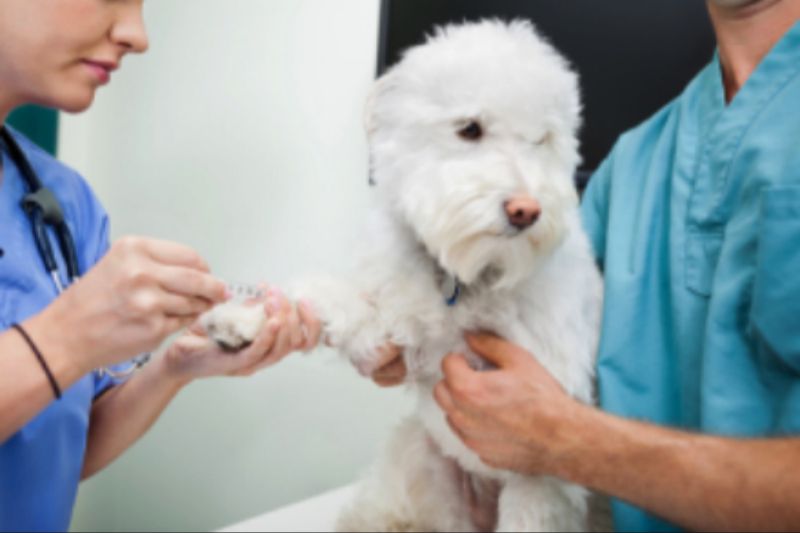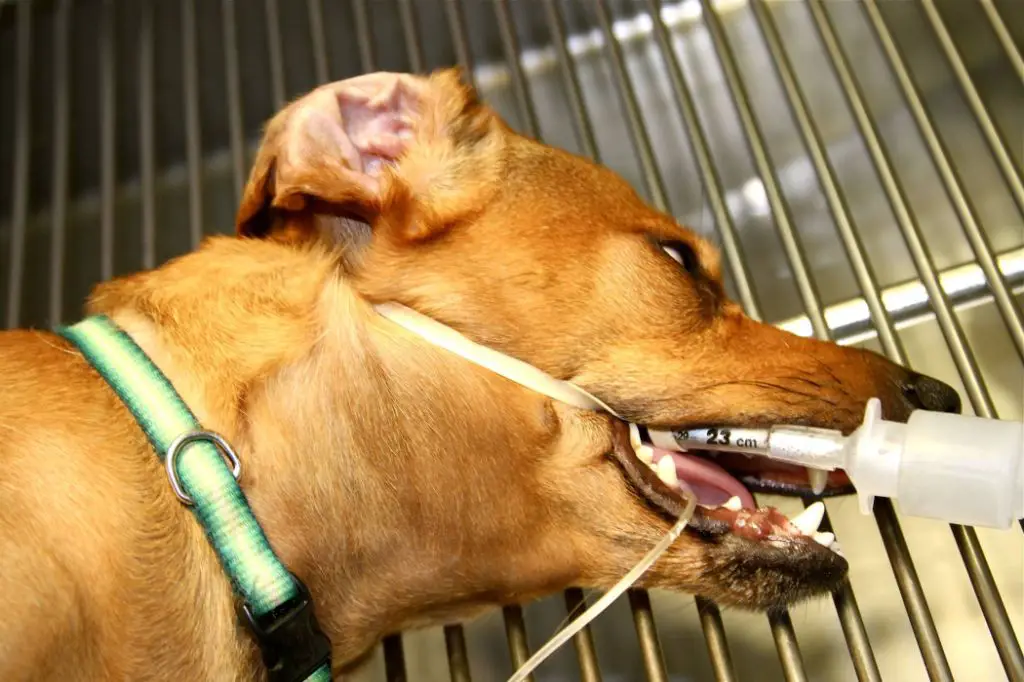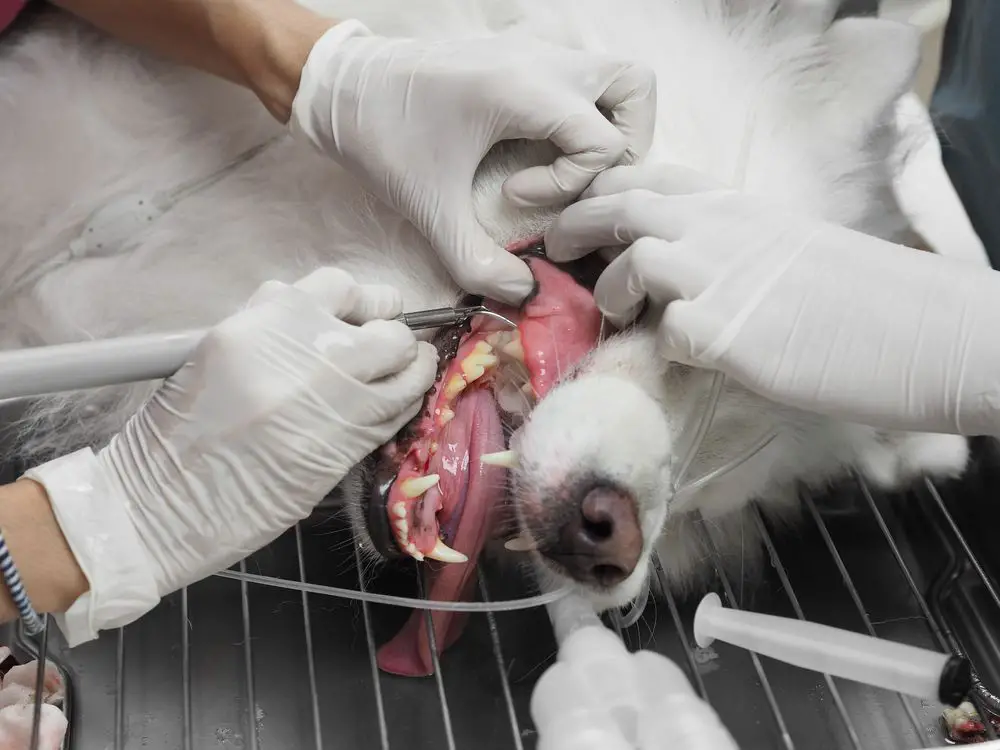Introduction
Dental cleanings under anesthesia are an important part of preventative care for dogs. While many pet owners practice regular teeth brushing at home, over time tartar and plaque can still accumulate below the gumline or in hard to reach places, putting dogs at risk for periodontal disease. Professional dental cleanings allow veterinarians to fully assess the health of a dog’s mouth, remove all built-up tartar and plaque above and below the gumline, smooth enamel, and provide any needed dental treatments.
There are several reasons why cleanings are performed under anesthesia. Anesthesia allows the veterinarian to thoroughly examine the entire mouth including under the gums. Dogs also need to stay very still during dental procedures, which isn’t always possible when they are awake. General anesthesia ensures the safety and comfort of the dog throughout the cleaning. The use of anesthesia also allows for dental x-rays to check for issues below the gumline. Overall, cleanings under anesthesia are critical for dogs to maintain good oral health and prevent more serious dental disease.
Pre-Anesthetic Bloodwork
Before putting a dog under anesthesia for a dental cleaning, most veterinarians will require pre-anesthetic bloodwork. This involves taking a blood sample and running tests to evaluate the dog’s overall health and how they may respond to anesthesia.

There are a few main reasons why pre-anesthetic bloodwork is so important:
- It can detect issues like liver, kidney, or heart problems that could make anesthesia riskier.
- It provides a baseline to compare to if any complications arise during or after anesthesia.
- It helps the vet determine the safest anesthetic agents and doses to use.
- It ensures the dog is healthy enough to safely undergo a dental cleaning procedure under anesthesia.
While most vets require pre-anesthetic bloodwork, some may waive it for very young, otherwise healthy dogs. But for middle-aged to senior dogs, it’s considered a mandatory step. It adds a bit of time before anesthesia can begin, but provides valuable insights that justify the minimal delay.
Anesthesia
General anesthesia is typically used for dental cleanings to ensure the patient remains still and comfortable throughout the procedure. This involves administering an anesthetic agent like propofol intravenously or through inhaled gases. The anesthesia will induce unconsciousness so the dog does not feel any pain or discomfort during the dental cleaning.
Though generally safe, there are some risks associated with general anesthesia. Potential side effects include lowered blood pressure, slowed heart rate and breathing, nausea, and disorientation after waking up. More serious risks, though very rare, include heart or breathing complications. Overall, anesthesia death rates are estimated to be around 0.15% for healthy dogs. This is why pre-anesthetic bloodwork is recommended beforehand to identify any conditions that could increase anesthetic risk.
Intubation
Intubation is an important part of the dental cleaning process under anesthesia. The veterinarian will insert a breathing tube called an endotracheal tube through the dog’s mouth and into the trachea (windpipe). This ensures that the airway remains open and protected throughout the procedure.

To intubate the dog:
- The dog is placed on its back and anesthetized until the jaw relaxes.
- The vet opens the dog’s mouth wide and uses a laryngoscope to visualize the larynx (voice box).
- The endotracheal tube is inserted through the mouth and guided down into the trachea.
- The tube is connected to an anesthesia machine to deliver oxygen and anesthetic gas.
- The tube is secured in place to prevent movement.
- Proper intubation protects the airway from fluids and debris during dental cleaning.
Intubation is a quick process, taking just a minute or two for an experienced veterinarian. It ensures the dog can safely remain under anesthesia throughout the full dental cleaning.
Tooth Scaling
Tooth scaling is performed after the dog is under anesthesia and intubated. A dental scaler, which is a handheld instrument with a small metal tip, is used to remove tartar and plaque from the tooth surfaces. The scaler works by using vibrations to break up and dislodge built-up calcified deposits on the teeth.

There are two main types of dental scalers used – an ultrasonic scaler and a manual scaler. An ultrasonic scaler vibrates very quickly, helping to break up tartar. A manual scaler requires more hand scaling by the veterinary technician to scrape off plaque and calculus.
All surfaces of the teeth are scaled, including along the gumline and in between teeth. Scaling thoroughly cleans each tooth down to the surface. The technician will scale above and below the gumline to remove any plaque and tartar buildup. Any residual calculus remaining after scaling will be polished away.
Tooth Polishing
After the veterinarian has finished scaling the dog’s teeth to remove tartar and plaque buildup, they will move on to polishing the teeth. This is an important step, as it smooths the tooth enamel and removes any remaining calculus or stains that were not removed during scaling.
For polishing, the vet uses a rubber cup or specialized polishing paste along with a handheld slow-speed polisher. The polisher rotates at low speeds to avoid heat buildup or damage to the tooth enamel. The polish is gently worked over each tooth surface, similar to how you would polish a car or other surface. This removes any microscopic debris and gives the teeth back their natural shine.
Polishing may take 5-10 minutes per arcade (upper or lower jaw). The vet will carefully polish the front and back of each tooth, even ones that are difficult to reach. Proper tooth polishing is important not just for cosmetic reasons, but also for your dog’s oral health. The smooth, polished enamel will allow better self-cleaning of the teeth in the future and prevent bacteria or calculus from adhering as easily. Your dog’s clean, polished teeth will look beautiful and help support their overall dental health.
Fluoride Treatment

The veterinarian will likely apply a fluoride treatment after scaling and polishing the dog’s teeth. Fluoride helps strengthen tooth enamel and prevent future dental disease. It works by inhibiting demineralization and enhancing remineralization of enamel. The fluoride applied is usually in the form of a fluoride varnish or gel. It creates a protective coating that gets absorbed into the microscopic pores of the enamel. The effects can last for several months. Some options like fluoride foams can help with plaque as well. The fluoride is left on the teeth before the dog wakes up from anesthesia. This allows it to set without the dog salivating or moving around. Fluoride treatments are an important part of the dental cleaning process to help prevent rapid tartar buildup and protect teeth long-term.
Recovery Monitoring
After the dental cleaning and any additional procedures are complete, your dog will be taken off the anesthetic gas and allowed to begin waking up. This process is carefully monitored by the veterinary team to ensure your dog has a smooth and safe recovery.
Your dog will be continuously monitored as the anesthesia wears off. Vital signs including heart rate, respiration, oxygen levels, and body temperature will be closely watched. Your dog may be given supplemental oxygen during the early recovery period to help them return to normal respiratory function.
Most dogs begin waking up within 5-15 minutes after anesthesia is discontinued, but it may take up to 30 minutes or longer for the effects to completely wear off. Your dog will likely seem sleepy and uncoordinated at first. Swallowing reflexes and awareness usually return before your dog is fully standing and ambulating on their own.
Your veterinarian will assess your dog’s recovery and make sure they are stable and alert before allowing you take them home. You’ll receive detailed discharge instructions on caring for your dog post-procedure. Full recovery typically takes 6-12 hours, during which time your dog should be kept comfortable and monitored for any concerning signs like vomiting or difficulty breathing. With proper anesthesia and monitoring, your dog should make a smooth and uneventful recovery after their dental cleaning.
Additional Procedures
While teeth cleaning is the primary focus when a dog is under anesthesia, the veterinary team will often take advantage of the opportunity to perform other procedures that require the dog to be unconscious and still:
- Radiographs (X-rays) to evaluate tooth and jaw health in greater detail
- Oral tumor removal – Small oral masses or growths can be more easily removed when the dog is sedated
- Tooth extractions – Teeth that are diseased, damaged or infected beyond repair may need extraction
- Biopsies – Samples of abnormal tissue may be collected and sent for laboratory analysis
- Suture removal – Sutures from previous procedures can be taken out while the dog is sedated
Performing these additional but related procedures while the dog is already anesthetized helps minimize stress for the dog and additional sedation needs. It allows the veterinary team to be as thorough as possible in evaluating and addressing any dental health issues.
Average Cleaning Time
The typical timeframe for a complete dental cleaning procedure under anesthesia for a dog is 60-90 minutes from start to finish. This includes the pre-anesthetic preparation, administration of anesthesia, the actual teeth cleaning steps, and post-procedure monitoring as the dog recovers.
Most of the time will be spent on the teeth cleaning itself. The dental scaling to remove tartar above and below the gumline often takes 30-45 minutes. The tooth polishing and fluoride treatment may take another 15-20 minutes. Factors like the size of the dog and how many teeth need cleaning can affect the cleaning time.
Additionally, if any extra procedures are performed such as tooth extractions, biopsies or x-rays, that will also lengthen the total time under anesthesia. But for a routine cleaning only, most vets estimate 60-90 minutes from initial sedation through final recovery.